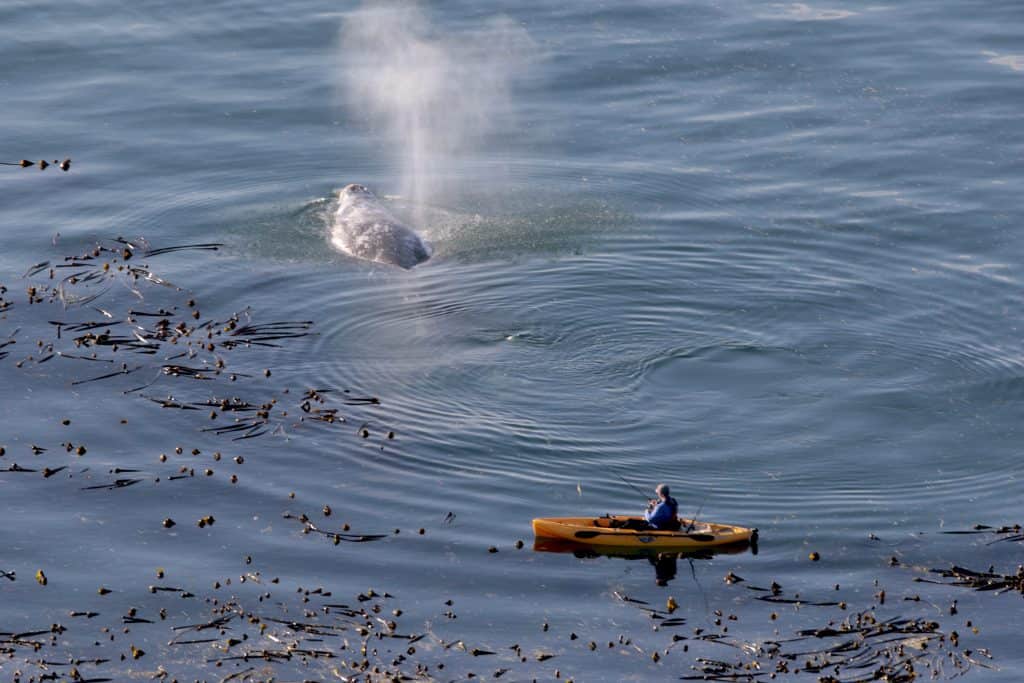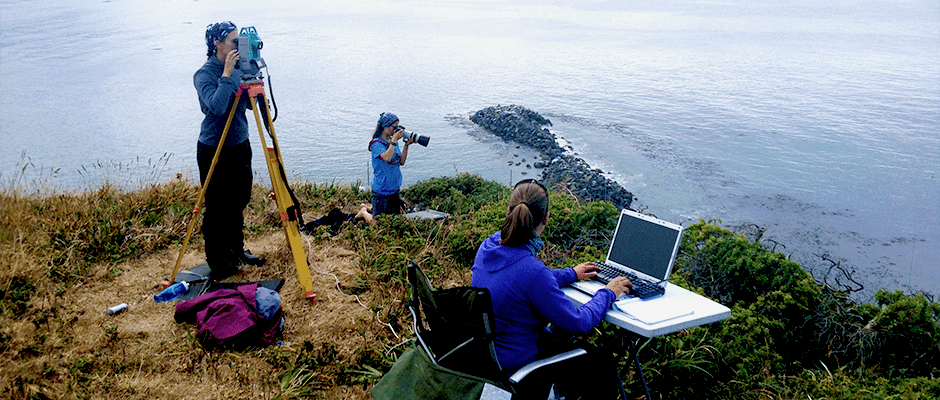Share this article
JWM: Gray whales change behavior near boats
While the Oregon coast has seen an increase in ecotourism, including boaters hoping to spot gray whales (Eschrichtius robustus), the state had no regulations or guidelines in place to protect the whales from disturbances.
That could be a problem, researchers discovered, because these whales display different searching and foraging behaviors in the presence of boats.
“What are the limits and where is the edge of respectful interaction without disturbance to whales?” wondered TWS member Florence Sullivan, lead author of the study published in the Journal of Wildlife Management, who worked on this project while earning her master’s degree at Oregon State University.
“Some folks and captains often get irritated with whale watchers because people are too close to the whales,” Sullivan said. Visitors who don’t know where to find the whales end up “speeding all over the place,” she said. “They don’t know the signs to look for.”
In order to create some regulations and opportunities for outreach regarding the whales, Sullivan and her team studied the effects of tour boats, fishing boats, personal boats and kayaks on whale behavior at two different sites: heavily trafficked Boiler Bay and quieter Port Orford.
In the summer of 2015, Sullivan and her colleagues monitored the two sites for four weeks each. Using photo identification and a theodolite, which measures angles from the shore to determine how far away a whale or boat is, the team analyzed whale behavior in relation to location, boat presence and type of boat.

A gray whale startles a kayak fisherman in Port Orford, Oregon. Researchers found kayaks make little noise, causing whales to make quick decisions when coming into contact with one.
©Florence Sullivan
In Boiler Bay, Sullivan found, the whales exhibited less searching behavior and more traveling behavior. While searching, if the whales encountered vessels, they would begin traveling away from the boats. While foraging, if the whales already found food, they stayed nearby. If not, they’d look elsewhere. “It’s like if you have an ice cream cone, you wouldn’t abandon it,” Sullivan said. “But if you didn’t you wouldn’t mind looking for a different ice cream spot.”
In Port Orford, there was more kayak interaction, Sullivan said. Here, the whales were more likely to stop foraging when they encountered a kayak and begin searching. Sullivan said this likely is because kayaks are quieter since they don’t have a motor, so whales have less time to make decisions when they come in contact with a kayak.
Sullivan and her team used this information to develop guidelines for whale watchers in Oregon in collaboration with the Oregon Department of Fish and Wildlife, whale watch companies, boat captains and invested community members who gave guidelines on the feedback.
The guidelines urge boaters to stay more than 100 yards away from a whale unless the whale approaches, and to stay at least 150 yards from a calf. Boaters are also encouraged to not spend more than 30 minutes with an individual whale and be cautious of speed around whales.
With help from a graphic designer, Sullivan developed a brochure that opens up to a poster displaying these guidelines, which are available at www.watchoutforwhales.org.
“When researchers and community members work together, we have an opportunity to conduct studies that can be a force for good,” she said.
TWS members can log into Your Membership to read this paper in the Journal of Wildlife Management. Go to Publications and then Journal of Wildlife Management.
Header Image: The research team tracks a whale in Port Orford, Oregon. Sarah Wiesner uses the theodolite to locate the animal, Cricket Medellin takes photos for individual identification and Florence Sullivan makes behavioral notes on the research computer. ©Cory Bantam








